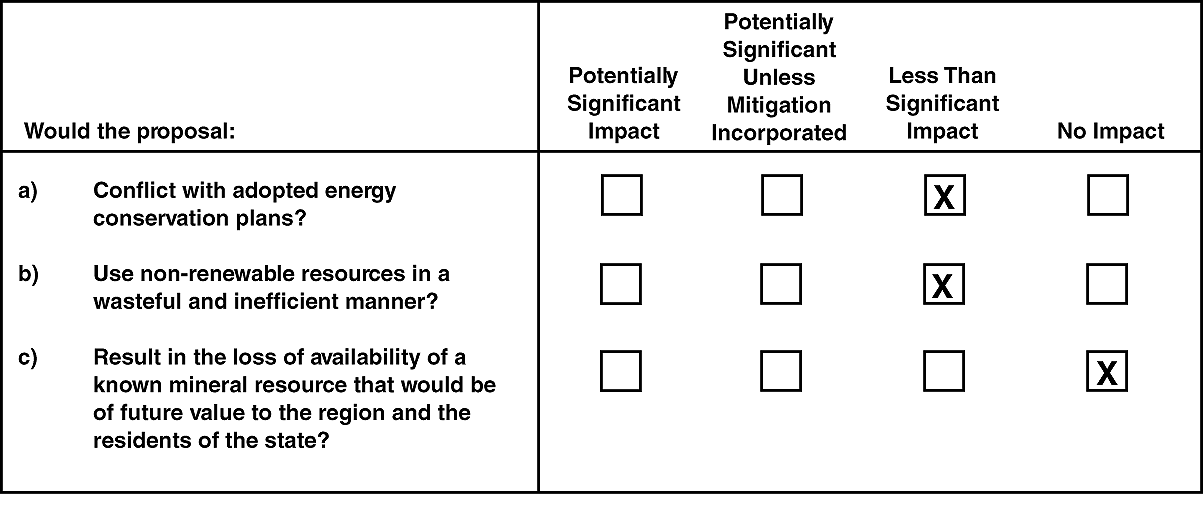
SECTION 4
ENVIRONMENTAL CHECKLISTS
4.8 ENERGY AND MINERAL RESOURCES

SETTING
Petroleum and natural gas supply most of the energy consumed in California. Petroleum (used primarily for transportation) provides about 50 percent of the State's energy needs, and natural gas provides about 29 percent (California Energy Commission, 1994). The remaining comes from a variety of energy resources, including coal, nuclear, geothermal, and hydropower.
Roughly 21 percent of California's total energy use is consumed as electricity. Geothermal, hydropower, nuclear and "other" account for 50 percent of the electricity generated, natural gas fuels 31 percent, and coal accounts for 19 percent of the generated power. (Petroleum accounts for less than 1 percent.) The major users of electricity are the following: commercial energy, 13 percent; industrial, 10 percent; and residential, 10 percent. Conversion (transforming the energy into electricity) and transmission loss accounts for 67 percent of the total electricity used in California (California Energy Commission, 1994).
The California Energy Commission has formulated and adopted a set of energy policies. These include policies to develop programs that meet energy and environmental quality needs; to promote competitive markets and energy efficiency technologies; to balance energy, economic, and environmental goals; to collaborate with the electricity and natural gas industries to redefine government's energy regulatory role; and to implement policies to achieve cost-effective building and appliance efficiency (California Energy Commission, 1994).
Specific plans, recommendations, and action steps include the following:
CHECKLIST ISSUES
a) Conflict with Energy Conservation Plans
Divestiture does not conflict with the State's adopted energy conservation plans.
Assessment of environmental effects that may result from divestiture depend upon a definite set of assumptions, beginning with the basic premise that the stated goals of AB 1890 will be attained as intended. These include:
Conclusion
Divestiture does not conflict with any adopted energy conservation plans. Therefore, this would be a less-than-significant impact.
b) Wasteful or Inefficient Use of Non-Renewable Resources
The new owners of the plants being divested will have incentives to run the plants at higher levels than they are operated at present. In addition, retirement of such plants may be deferred, as compared to current regulated conditions. In order to compete in the electrical generation market, it is expected that these plants will improve their overall efficiencies. Plants that cannot compete will not be operated as much.
Conclusion
The increased use of energy resources that could result from divestiture is likely to be less wasteful or inefficient. This impact is less than significant.
c) Loss of Availability of Known Mineral Resources
Divestiture is not expected to affect the availability of known mineral resources, because fuel demand would be met by existing in-state and out-of-state resources.
Conclusion
Because divestiture would not affect known mineral resources, no impact would occur.